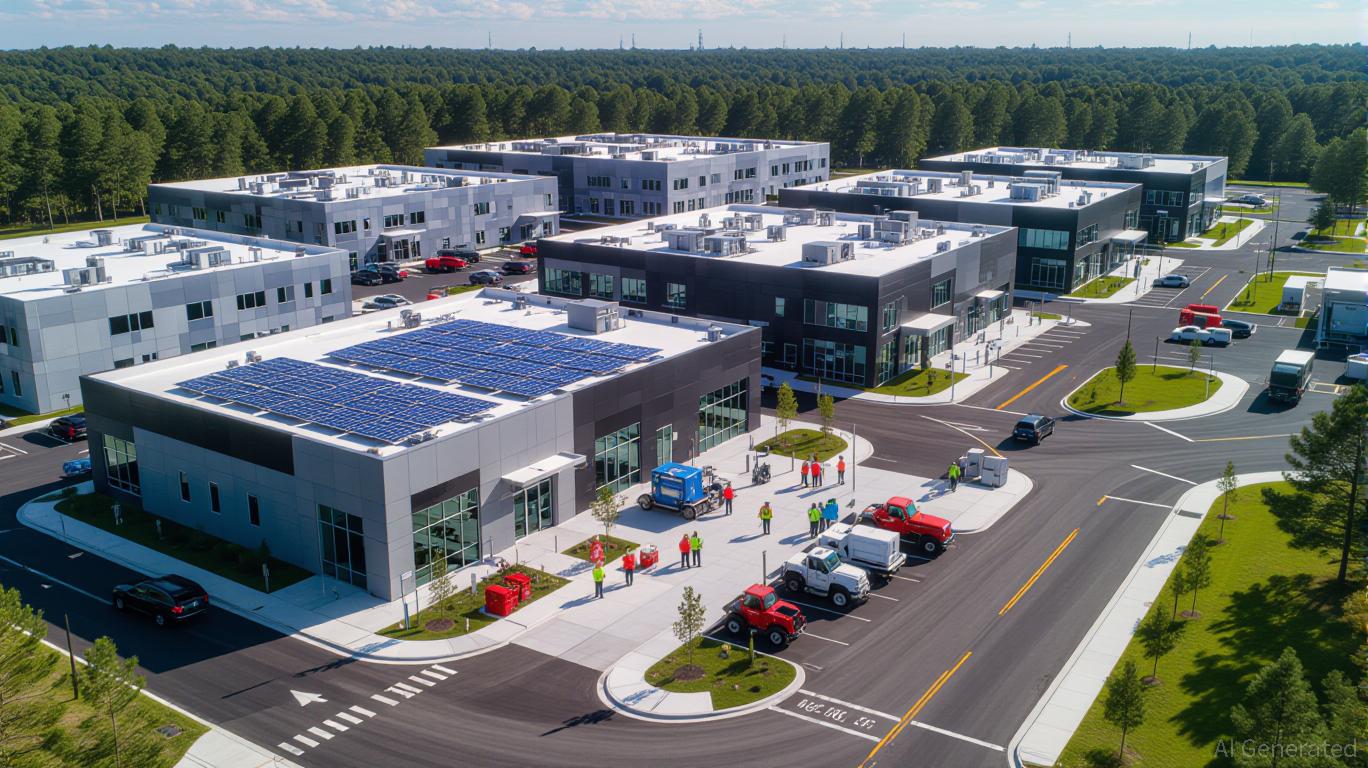While tokenization makes headlines, infrastructure will decide who wins | Opinion
Interest in the tokenization of real-world assets has propelled the market to a $23 billion valuation in 2025. Yet, continued success hinges on robust infrastructure.
- Tokenization is gaining traction — with Coinbase, JP Morgan, Citi, Franklin Templeton, and Goldman Sachs all launching pilots — but efforts remain siloed and fragmented.
- Liquidity gaps and inconsistent infrastructure threaten the World Economic Forum’s $4T projection for tokenized assets by 2030.
- Strategic alliances (e.g., Chainlink with DTCC, Securitize with Ethena) show progress, but risk creating dependency without true interoperability.
- The real breakthrough will come from a unified, inclusive, end-to-end infrastructure that integrates custody, compliance, settlement, and liquidity at an institutional scale.
The shift to tokenization has recently gained momentum, with Coinbase filing with the SEC to offer tokenized equities and JP Morgan executing $500 million in tokenized Treasury trades. That momentum, however, won’t translate to scale unless infrastructure catches up, and that’s where the entire movement could stumble.
The World Economic Forum projects that tokenized assets could attract $4 trillion by 2030, but liquidity gaps and inconsistent standards threaten adoption.
Fragmentation stalls tokenization’s promise
The promise of tokenization is already visible. Major financial players have moved far beyond white papers and proof-of-concepts. Citigroup is tokenizing trade finance deposits. Franklin Templeton is running a money market fund on public blockchains. Goldman Sachs has issued digital bonds, while IBM has explored patent tokenization.
What is the common thread running between them? These efforts remain siloed.
The ecosystem is still a patchwork of niche solutions, lacking seamless interoperability. A Deloitte report notes 56% of institutional investors cite fragmented infrastructure as a barrier to blockchain adoption. This silos liquidity, limiting tokenized assets’ appeal for banks seeking efficient settlement.
In response, there has been a rise in strategic alliances. Chainlink and The Depository Trust & Clearing Corporation are testing cross-chain interoperability. Securitize is working with Ethena to tokenize yield-bearing stablecoins. These partnerships are encouraging, but also reveal a deeper truth – so far, no one has built the infrastructure to operate independently. This vacuum opens the door to a wider problem: monopolization.
Balancing growth with infrastructure diversity
Centralized exchanges play a key role in project visibility through token listings. Their ability to provide liquidity, enable access, and foster market confidence is foundational to the digital asset ecosystem.
However, as tokenization advances, there’s a parallel need to ensure infrastructure remains diverse and accessible. At the heart of tokenization is the promise of expanding access to financial opportunity. To fully achieve this, the ecosystem must build towards an inclusive, interoperable infrastructure.
Strategic partnerships remain critical to early-stage projects, but without more diverse infrastructure, these partnerships could lead to reliance instead of long-term strength. Global regulatory initiatives such as the EU’s Markets in Crypto-Assets Regulation, which enforces competition rules, are designed to maintain fairness. As the ecosystem matures, the industry must take active steps to ensure tokenization lives up to its core values of decentralization and inclusivity. By prioritizing openness, encouraging infrastructure diversity, and supporting fair competition, we can build a future where both large institutions and emerging players thrive.
The crypto industry often celebrates permissionlessness, yet it is controlled by a minority. While this may appeal to regulators or institutions in the short term, the real opportunity lies in building systems that avoid power imbalances.
Tokenization needs a full-stack infrastructure
Institutions don’t want multiple vendors. They want infrastructure that just works. That means integrated solutions for custody, compliance, issuance, settlement, privacy, and liquidity. Not a patchwork, but a unified platform.
Early versions of this are already taking shape. Platforms like Securitize offer lifecycle management tools for tokenized securities. Others, such as Provenance and RedSwan, provide tokenization-as-a-service for real estate and private equity. These are meaningful steps, but they are not enough. The market needs more ambitious, end-to-end architecture.
To unlock tokenization’s full benefits, builders must stop working in silos. What’s needed are interoperable systems that can meet institutional-grade requirements at scale — reliably, securely, and compliantly.
Because tokenization isn’t just a blockchain feature, it’s the foundation for the next generation of financial infrastructure.
A unified path forward
Tokenization’s $4 trillion potential depends not on headlines or pilots. It depends on a cohesive infrastructure that unifies custody, compliance, privacy, and liquidity
We won’t reach that future through short-term alliances or hype cycles. The winners in this next phase of tokenization won’t be those who dominate headlines. It will be those who build durable, interoperable, and inclusive infrastructure.
Marcos Viriato is the co-founder and CEO of Parfin, a fintech company providing digital asset custody and blockchain solutions to financial institutions. Parfin is recognized and backed by industry leaders such as Accenture Ventures and Framework Ventures. Under his leadership, Parfin developed Rayls, a permissioned EVM-compatible blockchain currently being tested as the privacy layer for Brazil’s central bank digital currency, Drex. Previously, he was a partner at BTG Pactual, one of Latin America’s largest investment banks.
Disclaimer: The content of this article solely reflects the author's opinion and does not represent the platform in any capacity. This article is not intended to serve as a reference for making investment decisions.
You may also like
XRP News Today: Institutional ETFs and Derivatives Indicate a Positive Shift for XRP Above Crucial Support Levels
- XRP rebounds above $2.20 as buyers defend key support, supported by $107.92M in ETF inflows and rising institutional confidence. - Technical analysis highlights a bullish "Staircase to Valhalla" pattern, with $2.26-$2.52 resistance levels and Fibonacci targets signaling potential for $2.69. - Derivatives data shows aggressive long-positioning (OI: $4.11B), with Binance's 2.56 long-short ratio and 57% options OI surge reinforcing bullish momentum. - Institutional ETF conversions (e.g., Grayscale Zcash) an

Why Switzerland's Temporary Halt on Crypto Highlights Worldwide Regulatory Disunity
- Switzerland delays crypto tax data-sharing until 2027, highlighting global regulatory fragmentation amid CARF adoption challenges. - Two-phase approach prioritizes domestic law alignment before reciprocal agreements with key economies like U.S., China, and Saudi Arabia. - 75 CARF signatories progress unevenly, with U.S. and Brazil proposing alternative frameworks, complicating cross-border compliance. - Swiss crypto firms face operational risks during transition, as critics warn of regulatory arbitrage b

Thailand’s Bold No-Crypto-Tax Move: Shaping a Future Southeast Asian Crypto Center
- Thailand imposes 0% capital gains tax on local crypto trading (2025-2029) to boost its digital economy and attract investors. - The policy aligns crypto profits with tax-exempt stock trading, supported by a 2024 Bitcoin ETF and Tourist DigiPay pilot for foreign visitors. - Regulatory caution is evident through biometric data shutdowns and PDPA compliance, balancing innovation with security amid regional competition. - Projected $1B annual economic gains aim to position Thailand as a top Southeast Asian c
The Transformation of Webster, NY: Targeted Property and Infrastructure Initiatives After the Xerox Era
- Webster , NY, secured a $9.8M FAST NY grant to transform the former Xerox campus into a shovel-ready industrial hub, part of Governor Hochul’s upstate revitalization strategy. - Infrastructure upgrades, including road and sewer improvements, aim to attract advanced manufacturing and logistics firms by reducing development risks and costs. - The Xerox campus redevelopment includes mixed-use projects, projected to create 250 jobs and boost property values through residential and commercial integration. - W

